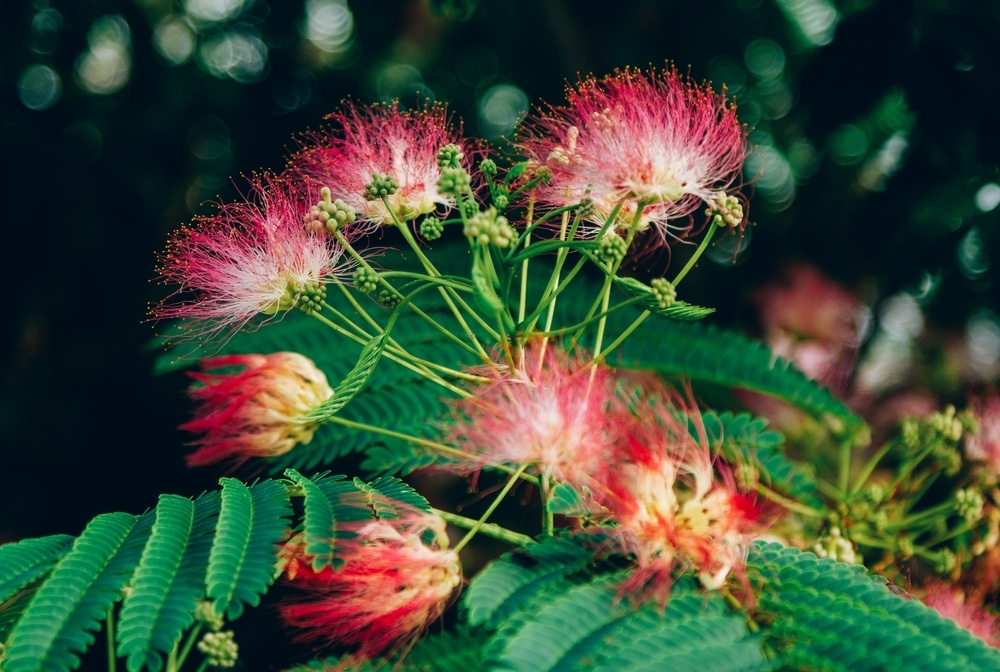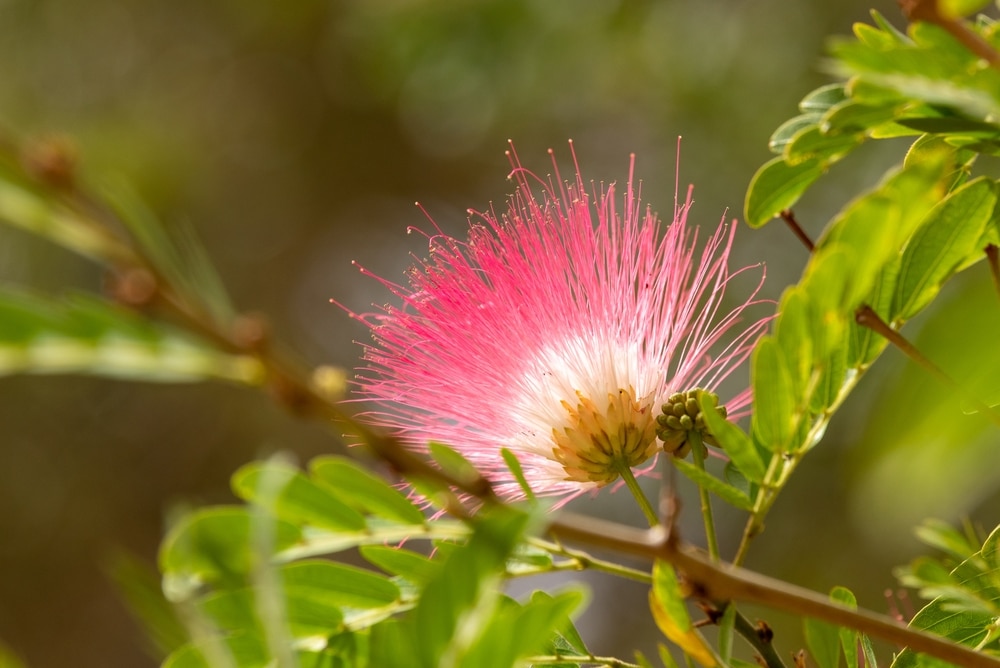Native to the breathtaking country of Bolivia, this evergreen shrub produces blooms that resemble soft, fluffy powder puffs, hence its name. They are fast-growing and can grow up to a height of 180 inches. As these trees grow taller vertically, they can also spread and can reach up to 36 inches wide upon maturity.
These trees are excellent hedge and privacy fence options because of how they grow. Its leaves grow densely, making it an ideal candidate for creating a natural barrier around your home. They provide shade and can be used as windbreaks.
Additionally, these trees are low-maintenance and can also be grown indoors as long they’ve been provided with the ideal living and growing conditions.
| Botanical Name | Calliandra Haematocephala |
| Common Name | Powderpuff Tree, Fairy Duster |
| Plant Type | Perennial |
| Flower Color | Red, Pink, White |
| Size When Mature | 120-180 Inches |
| Bloom Time | Fall and Winter |
| Sun Requirements | Full Sun to Partial Shade |
| USDA Hardiness Zones | 9 – 11 |
| Soil PH Range | 6.0 – 7.5 |
| Soil Type | Rich, Moist, Well-draining |
| Water Needs | Low |
| Native Area | Bolivia |
What You Need to Know About Powderpuff Tree
Powderpuff trees are generally easy to care for, and they grow at fast rates. They produce blossoms in red, pink, or sometimes white, and these flowers are soft and fluffy, powderpuff-like in appearance.
Although they can bloom all throughout the year under ideal conditions, they would typically blossom during the fall and winter. The leaves are about 2 inches that appear pink at first but will eventually turn dark green as it matures.
The tree is sometimes called Fish-Poison Tree because parts of the tree contain saponin that is toxic to fish. Saponin is a chemical that can be used as an insecticide or pesticide.
Although severe poisoning is rare, it can still be toxic to humans, so it is best to take caution. If you have pets or kids at home, make sure that they will not be able to reach the tree or come in contact. It is also best not to plant this tree near bodies of water where there are fish as it might poison them.
How to Care for Powderpuff Tree
Here’s everything you need to know about growing and caring for a thriving Powderpuff Tree:
Light
These beautiful trees prefer full sun. They can also tolerate partial shade but won’t flower as much. When grown indoors, it is important to place them near a sunny window where they would receive the sunlight that they need.
Rotating your plant would also be beneficial to promote even growth while allowing the leaves to receive sunlight evenly.
Water and Soil Needs
One of the most crucial aspects of growing this tree is regular watering, especially when they are young. Avoid situations where the soil dries out entirely during their growing years. Thoroughly keep the roots soaked, and wait for the top 2 inches of the ground to dry before watering again.
Once established, these shrubs are drought tolerant and can even survive on rainfall alone. However, it is important to make sure that the soil is well-draining to prevent the roots from rotting.
They can be grown in any type of soil as long as it is well-drained and not too waterlogged. However, rich soil with pH levels of 6.0 to 7.5 is ideal and will help faster and healthier growth.
Temperature Requirements
Powderpuff Trees are not tolerant to frost, and they would thrive in USDA zones 9 to 11. They are just moderately cold tolerant, and when temperatures drop below 40, they’ll easily show signs of temperature stress.
Fertilizer
The best fertilizer to use on a Powderpuff Tree is a diluted fertilizer solution. Dilute 1/4 teaspoon of liquid fertilizer in a gallon of water, and this should be applied only during its growing season. These plants don’t need feeding as much as other plants since they grow relatively fast. Too much fertilization will only lead to foliage growth and the absence of flowers.
Common Diseases
The Powderpuff Tree is susceptible to diseases but may be frequently visited by aphids and mealybugs. Check your plant frequently to make sure that there are no pests present. Although there are no specific fungicides or pesticides that control these pests, you can still use a general-purpose insecticide.
Powderpuff Tree Propagation
Propagating the Powderpuff Tree is somewhat easy. This is usually done using cuttings, and roots immediately emerge if done properly. Take cuttings that are at least six inches long and make sure that there are no leaves present in the lower part.
If there are, you may remove them by twisting the leaves off. Place the cutting in a glass of water and change the water every few days. When roots have grown, you may then plant them in a pot filled with well-draining soil.
Alternatively, you can also root the plant in moist soil. Cover the cutting with a plastic bag to maintain humidity and moisture. Place it in an area where it would receive indirect sunlight and keep the soil moist at all times.


